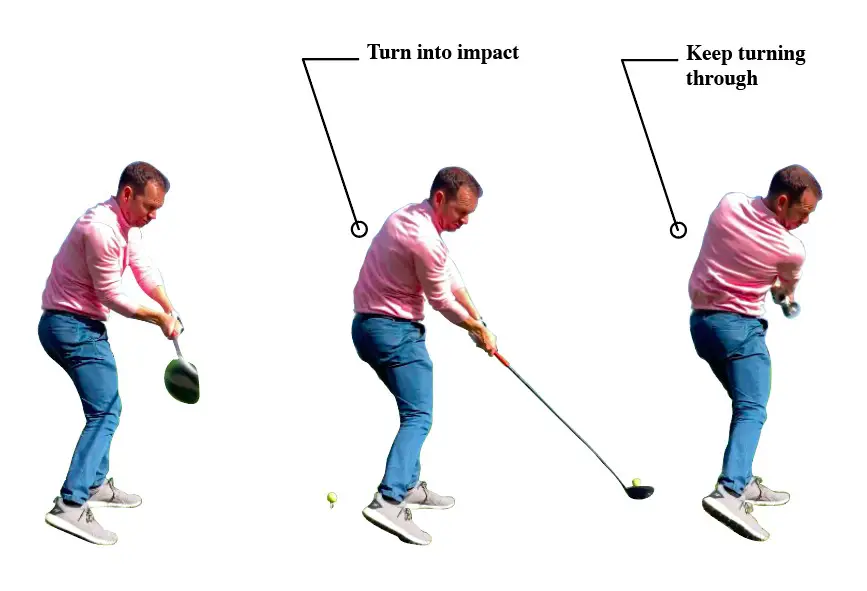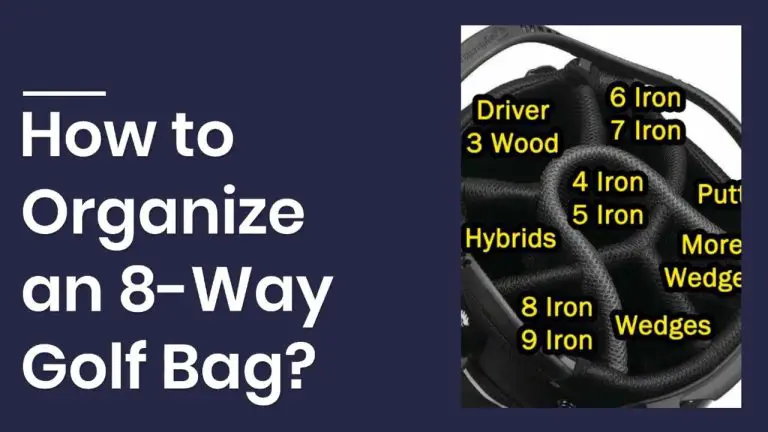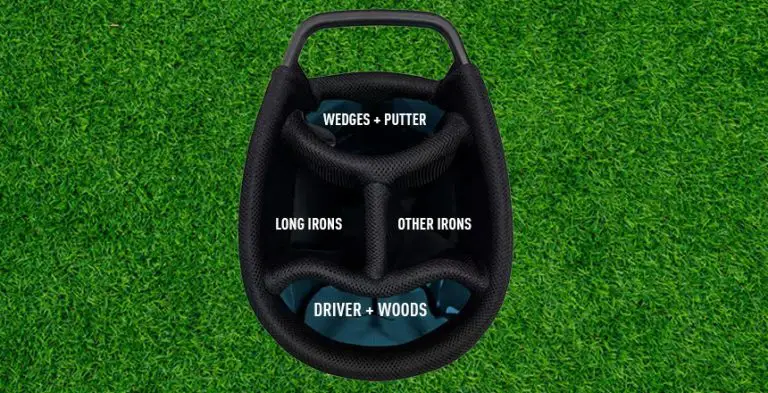How To Hit A Golf Ball Straight With A Driver

Hitting a golf ball straight with a driver is the holy grail for many golfers. The ability to launch a powerful drive down the fairway, following a laser-straight trajectory, is not only visually impressive but also essential for achieving distance and accuracy off the tee. Whether you’re a beginner looking to master the fundamentals or an experienced golfer aiming to fine-tune your technique, this comprehensive guide will provide you with valuable insights and practical tips on how to hit a golf ball straight with a driver.
In this guide, we will delve into the core elements of a golf swing, explore the unique characteristics of the driver, and uncover the secrets to developing a consistent and accurate swing technique. We will delve into topics such as clubface control, alignment, ball flight management, mental strategies, and practice drills designed to enhance your driving accuracy. Additionally, we’ll discuss the role of course management and equipment adjustments in optimizing your performance with the driver.
By the end of this guide, you’ll have a solid understanding of the techniques and strategies necessary to launch straight and powerful drives with confidence. So grab your driver, step onto the tee box, and let’s dive into the art of hitting a golf ball straight with a driver.

Understanding the Basics of Golf Swing Mechanics
To hit the ball straight with a driver, it’s important to have a solid understanding of the basic elements of a golf swing. Let’s explore these elements and how they contribute to a straight shot.
What are the key elements of a golf swing?
The golf swing comprises several essential elements that work together to generate power and control. Understanding and mastering these elements is vital for hitting the ball straight. Let’s take a closer look at three key elements:
Grip
The grip is the foundation of your swing and influences how the clubface makes contact with the ball. A proper grip ensures control and stability throughout the swing. Experiment with different grip styles and find one that suits your comfort and promotes a square clubface at impact.
Stance and Alignment
Your stance and alignment play a crucial role in setting up for a straight shot. The stance refers to how you position your feet and body in relation to the target. Aligning yourself correctly helps establish a clear target line and promotes a consistent swing path.
Posture and Balance
Maintaining proper posture and balance throughout the swing is essential for generating power and accuracy. A solid and balanced stance enables you to make a controlled and fluid motion, resulting in a straighter shot.
How does the driver differ from other golf clubs?
The driver, also known as the 1-wood, is designed for maximum distance off the tee. Understanding the unique characteristics of the driver is essential for hitting the ball straight consistently.
Driver Loft
The loft of a driver refers to the angle of the clubface. It significantly influences the trajectory of the ball. Lower loft angles produce a lower ball flight, while higher loft angles promote a higher ball flight. Experimenting with different loft settings can help you find the optimal launch angle for a straighter shot.
Length and Shaft Flex
The driver typically has a longer shaft compared to other clubs, which allows for greater clubhead speed. Additionally, the shaft’s flex, or its ability to bend during the swing, affects the timing and release of the clubhead. Finding the right combination of length and shaft flex can optimize your swing mechanics for straighter drives.
Swing Speed
Your swing speed plays a role in hitting the ball straight with a driver. Too much speed can result in a loss of control, while insufficient speed may lead to a lack of distance. Finding the right balance and tempo for your swing speed is crucial for consistent and accurate drives.
Now that we have covered the basics of golf swing mechanics and the unique attributes of the driver, let’s move on to developing a consistent swing technique to hit the ball straight.
Developing a Consistent Swing Technique
A consistent swing technique is key to hitting the ball straight with a driver. Let’s explore some essential aspects that can help you develop a repeatable and accurate swing.
How can you improve your swing tempo and rhythm?
Achieving the right tempo and rhythm in your swing promotes a smoother and more controlled motion. Here are some tips to improve your swing tempo and rhythm:
The importance of a smooth takeaway and backswing
A smooth takeaway sets the tone for the entire swing. Focus on initiating the backswing with a controlled and gradual motion, avoiding any abrupt or jerky movements. This helps establish a proper swing path and allows for better continuity throughout the swing.
Transition and Downswing: Generating power while maintaining control
The transition from the backswing to the downswing is a critical phase where the energy is transferred from your body to the club. Strive for a seamless transition, maintaining the proper sequence of movement and avoiding any sudden or excessive movements. This allows you to generate power efficiently while retaining control over the clubface.
Impact and Follow-through: Key checkpoints for a straight shot
The impact position is where the clubface meets the ball. Achieving a square clubface at impact is crucial for hitting the ball straight. Focus on maintaining a firm and stable wrist position, keeping your hands slightly ahead of the ball. After impact, follow through with a balanced and controlled finish, allowing the club to naturally release.
How to achieve proper body rotation and weight transfer?
Proper body rotation and weight transfer are essential for generating power and consistency in your swing. Here are some tips to help you achieve optimal rotation and weight transfer:
Utilizing the hips, shoulders, and arms in sync
Efficient body rotation starts with the hips. Initiate the downswing by rotating your hips towards the target, followed by a coordinated movement of the shoulders and arms. This sequence promotes a natural and fluid rotation, allowing for a more consistent swing path.
Maintaining a balanced and centered pivot
Balance is crucial throughout the swing. As you rotate, ensure that your weight shifts from the back foot to the front foot, promoting a powerful and controlled transfer of energy. Avoid excessive swaying or leaning during the swing, as it can negatively impact your ability to hit the ball straight.
Generating maximum clubhead speed through efficient sequencing
Proper sequencing of the swing helps maximize clubhead speed while maintaining control. Start the downswing with the lower body, followed by the torso and arms. This sequential movement allows for an efficient transfer of energy, resulting in increased clubhead speed and a straighter ball flight.
By focusing on developing a consistent swing technique, you can significantly improve your ability to hit the ball straight with a driver. However, swing mechanics alone are not enough. Clubface control and alignment also play crucial roles in achieving accuracy off the tee.
Mastering Clubface Control and Alignment
Clubface control and alignment are essential factors in hitting the ball straight with a driver. Let’s explore how you can enhance your control over the clubface and align yourself effectively for a straight shot.
How to square the clubface at impact?
Achieving a square clubface at impact is crucial for straight shots. Here are some techniques to help you improve clubface control:
The role of grip pressure and hand position
Grip the club with moderate pressure, ensuring a secure hold without squeezing too tightly. Additionally, pay attention to your hand position throughout the swing. Maintain a neutral grip that allows for a natural rotation of the clubface through impact.
Understanding clubface angle and its influence on ball flight
The clubface angle significantly affects the direction of the ball. A closed clubface aims the ball to the left, while an open clubface sends it to the right. Experiment with different clubface angles to find the optimal position for a square impact and straight ball flight.
Drills and exercises to develop consistent clubface control
Practice drills can help you refine your clubface control. One effective drill is the “gate drill.” Place two alignment sticks or clubs parallel to each other, forming a gate just wider than the clubhead. Practice swinging through the gate, ensuring that the clubface passes through without touching the sticks. This drill promotes a square clubface and helps develop consistency.
How to align yourself for a straight shot?
Proper alignment sets the stage for hitting the ball straight. Consider the following factors when aligning yourself:
The importance of target alignment and body alignment
When aligning for a straight shot, it’s crucial to align both your body and the target correctly. Consider the following tips:
Target alignment:
Choose a specific target in the distance that you want to aim for. Align your body and clubface parallel to the target line. Visualize an imaginary line extending from the target to your ball, and ensure your clubface is pointing directly along that line.
Body alignment:
Position your feet, hips, and shoulders parallel to the target line. Aim to have your body square to the target, with no excessive tilting or leaning. This alignment helps promote a consistent swing path and encourages a straight ball flight.
Using alignment aids and visualizing the target line
Alignment aids such as alignment sticks or targets on the driving range can provide visual references to ensure accurate alignment. Additionally, visualize an extended target line from the ball to the target, helping you mentally align your body and clubface.
Practicing pre-shot routines to enhance alignment consistency
Developing a pre-shot routine that includes alignment checks can help ensure consistent alignment on every shot. Incorporate a step-by-step process in your routine to align your body, clubface, and target before each swing. This routine can improve your focus and set a foundation for hitting the ball straight consistently.
By focusing on clubface control and alignment, you can enhance your ability to hit the ball straight with a driver. However, there are additional considerations to take into account, such as managing ball flight and shot shaping.
Managing Ball Flight and Shot Shaping
Understanding ball flight and having control over shot shaping can be advantageous in hitting the ball straight. Let’s explore how you can correct common ball flight issues and utilize shot shaping techniques effectively.
How to correct common ball flight issues?
Certain ball flight issues, such as slicing or hooking the ball, can hinder your ability to hit it straight. Here are some tips to address these common issues:
Slice: Causes and corrective measures
A slice is a shot that curves from left to right for a right-handed golfer (right to left for a left-handed golfer). Common causes include an open clubface at impact, an out-to-in swing path, or a weak grip. To correct a slice, focus on closing the clubface, ensuring an inside-to-out swing path, and strengthening your grip slightly.
Hook: Identifying the root causes and making adjustments
A hook is a shot that curves from right to left for a right-handed golfer (left to right for a left-handed golfer). It is often caused by a closed clubface at impact, an inside-to-out swing path, or a strong grip. To straighten out your shots, work on opening the clubface, adjusting your swing path to be more neutral, and making slight grip adjustments.
Understanding fade and draw shots: When to utilize them
Fade and draw shots refer to intentional shot shapes that can be useful in certain situations. A fade is a controlled shot that curves slightly from left to right (right to left for a left-handed golfer), while a draw curves slightly from right to left (left to right for a left-handed golfer). Familiarize yourself with these shot shapes and practice them to expand your shot-making capabilities.
Can equipment adjustments help in hitting the ball straight?
Equipment adjustments can play a role in helping you hit the ball straight. Consider the following factors:
Driver loft and weight adjustments for desired ball flight
Some drivers offer adjustable features, such as loft and weight distribution, that can influence the ball flight. Experiment with different loft settings to find the ideal launch angle for your swing. Additionally, adjusting the weight distribution can help promote a desired ball flight, such as reducing a slice or promoting a draw shot.
Shaft flex and kick point: Finding the right combination
The shaft of your driver also plays a crucial role in the trajectory and accuracy of your shots. The flex of the shaft refers to its ability to bend during the swing, affecting the timing and release of the clubhead. Consider your swing speed and tempo when selecting a shaft with the appropriate flex. Additionally, the kick point of the shaft, which is the point of maximum bend, can influence the launch angle and spin rate. Experiment with different shaft flexes and kick points to find the combination that optimizes your ability to hit the ball straight.
Working with a professional club fitter to optimize your equipment
For personalized guidance on equipment adjustments, consider visiting a professional club fitter. They can analyze your swing characteristics, assess your needs, and make precise recommendations for club specifications. By optimizing your equipment to suit your swing, you can enhance your chances of hitting the ball straight consistently.
Now that we have covered the techniques and adjustments for hitting the ball straight with a driver, let’s explore the mental and course management strategies that can further improve your driving accuracy.
Mental and Course Management Strategies
Golf is not just a physical game; it requires mental strength and strategic decision-making. Here are some strategies to enhance your mental game and improve your driving accuracy.
How can the right mindset improve your driving accuracy?
Having the right mindset can positively impact your driving accuracy. Consider the following tips:
Staying focused and relaxed during the swing
Maintaining focus throughout your swing is essential for executing a straight shot. Clear your mind, eliminate distractions, and focus on the task at hand. Simultaneously, aim to stay relaxed and avoid tension in your muscles, as excessive tension can negatively affect your swing mechanics.
Visualizing the desired shot and committing to it
Visualization is a powerful mental tool that can enhance your performance. Before stepping up to the tee, visualize the desired shot trajectory and picture the ball flying straight down the fairway. This mental imagery helps program your mind and body for a successful execution. Once you have visualized the shot, commit to it fully and trust your abilities.
Overcoming anxiety and pressure on the tee box
Teeing off on a hole, especially in high-pressure situations, can induce anxiety and nerves. Develop techniques to manage these emotions, such as deep breathing exercises or positive self-talk. Remind yourself that hitting the ball straight is within your capabilities, and embrace the challenge with confidence.
Course management tips for hitting the ball straight
Strategic course management can significantly impact your driving accuracy. Consider the following tips:
Selecting the right target and shot selection
Before teeing off, assess the hole and consider the best target to aim for. Identify potential hazards and select a target that allows you to navigate the fairway with minimal risk. Additionally, choose the shot that best suits the situation—whether it’s a conservative approach for accuracy or a more aggressive line for distance.
Avoiding hazards and playing to your strengths
Identify the hazards and trouble areas on the course, such as bunkers, water hazards, or dense rough. Strategically plan your tee shots to avoid these hazards and play to your strengths. For example, if you tend to slice the ball, aim away from trouble on the right side of the fairway.
Developing a consistent routine for every tee shot
Establishing a pre-shot routine can help you maintain focus and consistency on the tee box. Create a sequence of actions that you perform before each tee shot, including alignment checks, visualization, and a specific trigger to initiate your swing. By implementing a consistent routine, you can reinforce good habits and approach each tee shot with confidence.
By incorporating mental strategies and effective course management techniques, you can optimize your driving accuracy and hit the ball straight more consistently. However, to truly improve your skills, it’s important to incorporate regular practice drills and utilize training aids specifically designed to enhance your driving accuracy.
Practice Drills and Training Aids
Practicing with purposeful drills and utilizing training aids can accelerate your progress in hitting the ball straight with a driver. Here are some effective drills and aids to consider:
What are some effective drills for improving driving accuracy?
Practicing specific drills can help you refine your technique and improve your driving accuracy. Here are a few drills to incorporate into your practice sessions:
Alignment and target practice drills
- The Gate Drill: Set up two alignment sticks or clubs parallel to each other, forming a “gate” slightly wider than your clubhead. Practice swinging through the gate, ensuring that the clubface stays on the correct path without touching the sticks. This drill helps reinforce a straight swing path and proper clubface alignment.
- Target Circles: Place targets, such as hula hoops or circles, at various distances on the range or practice area. Challenge yourself to hit shots that land within the circles, progressively moving to smaller targets as your accuracy improves. This drill sharpens your ability to hit specific targets consistently.
Tempo and timing drills for swing consistency
- One-Two-Three Drill: Focus on a smooth and deliberate tempo by counting “one” on the takeaway, “two” at the top of your backswing, and “three” on the downswing. This drill helps establish a rhythmic and balanced swing motion.
- Pause and Go Drill: Incorporate a brief pause at the top of your backswing before initiating the downswing. This drill promotes better sequencing and timing in your swing, leading to improved consistency.
Feedback training aids to enhance clubface control
- Impact Tape: Apply impact tape or spray to the clubface to visually analyze your ball-striking. By observing the impact pattern on the tape, you can adjust your swing to achieve a centered and square strike.
- Swing Path Trainers: Utilize training aids such as alignment rods or swing path trainers that guide your club along the correct swing path. These aids provide instant feedback on your swing plane and can help you develop a more consistent and on-plane swing.
Utilizing technology for swing analysis and improvement
Modern technology can provide valuable insights into your swing mechanics and help you identify areas for improvement. Consider incorporating the following tools:
Launch Monitors and Shot Tracking Devices
Launch monitors are devices that measure various aspects of your swing, such as clubhead speed, ball speed, launch angle, and spin rate. They provide detailed data and analysis that allow you to assess your swing and track your progress over time. Popular launch monitors include TrackMan, FlightScope, and Foresight.
Video Analysis and Swing Comparison Tools
Record your swings on video and use video analysis software or apps to review and analyze your technique. Compare your swings to those of professional golfers or models of an ideal swing to identify areas for improvement. Slow-motion playback and frame-by-frame analysis can reveal subtle flaws or inconsistencies in your mechanics.
Seeking professional instruction and feedback
Working with a qualified golf instructor can provide invaluable guidance tailored to your specific needs. They can assess your swing, offer personalized feedback, and provide drills and exercises to address any shortcomings. Professional instruction can help expedite your progress and ensure you develop proper techniques from the outset.
By incorporating practice drills and utilizing technology-driven training aids, you can accelerate your improvement in hitting the ball straight with a driver. Regular practice and feedback are essential for translating knowledge into skill on the golf course.
Conclusion
Hitting a golf ball straight with a driver is a skill that requires a combination of proper technique, clubface control, mental focus, and strategic decision-making. By understanding the fundamental elements of a golf swing, developing a consistent swing technique, mastering clubface control and alignment, managing ball flight and shot shaping, employing mental and course management strategies, and incorporating practice drills and training aids, you can significantly improve your ability to hit the ball straight with a driver.
Remember, achieving driving accuracy takes time, patience, and practice. It’s essential to approach each swing with a positive mindset, commit to your target, and trust in your abilities. Consistency and precision will come with dedicated effort and a willingness to continuously refine your skills.
So, head to the driving range, implement the techniques and strategies discussed in this guide, and enjoy the process of improving your driving accuracy. With practice, persistence, and a solid foundation of knowledge, you’ll be well on your way to hitting the ball straight with a driver and achieving success on the golf course.
Happy golfing!





